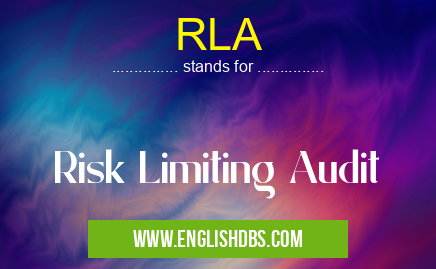What does RLA mean in AUDITING
An RLA is a statistical auditing method used to provide a high level of assurance that the reported election results are accurate within a specified margin of error.

RLA meaning in Auditing in Business
RLA mostly used in an acronym Auditing in Category Business that means Risk Limiting Audit
Shorthand: RLA,
Full Form: Risk Limiting Audit
For more information of "Risk Limiting Audit", see the section below.
Essential Questions and Answers on Risk Limiting Audit in "BUSINESS»AUDITING"
What is a Risk-Limiting Audit (RLA)?
How does an RLA work?
An RLA randomly selects a sample of ballots and manually recounts them. The results of the recount are used to estimate the overall accuracy of the election results.
What is the purpose of an RLA?
The purpose of an RLA is to provide independent verification of the accuracy of the reported election results. RLAs can help to detect potential errors, fraud, or other irregularities.
What are the benefits of using an RLA?
Benefits of using an RLA include:
- Provides a high level of assurance that the reported election results are accurate.
- Can help to detect potential errors, fraud, or other irregularities.
- Can increase public confidence in the election process.
What are the limitations of an RLA?
Limitations of an RLA include:
- Can be time-consuming and expensive to conduct.
- May not be able to detect all errors or irregularities.
- May not be able to provide a definitive answer in close elections.
When should an RLA be used?
An RLA should be considered in any election where there are concerns about the accuracy of the reported results or where there is a need for a high level of assurance.
RLA also stands for: |
|
| All stands for RLA |
